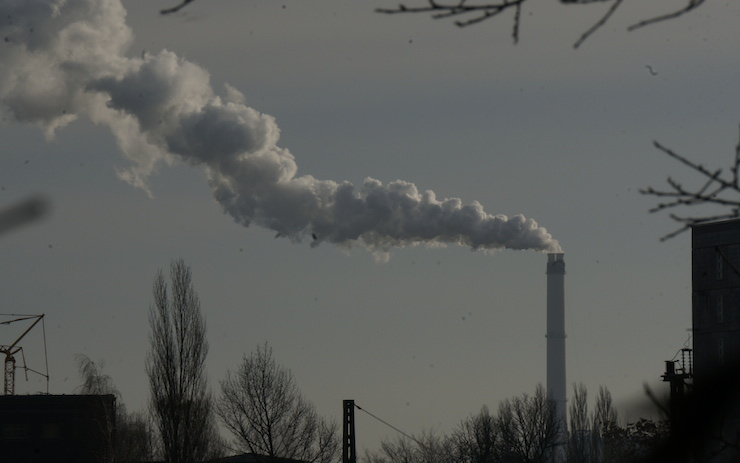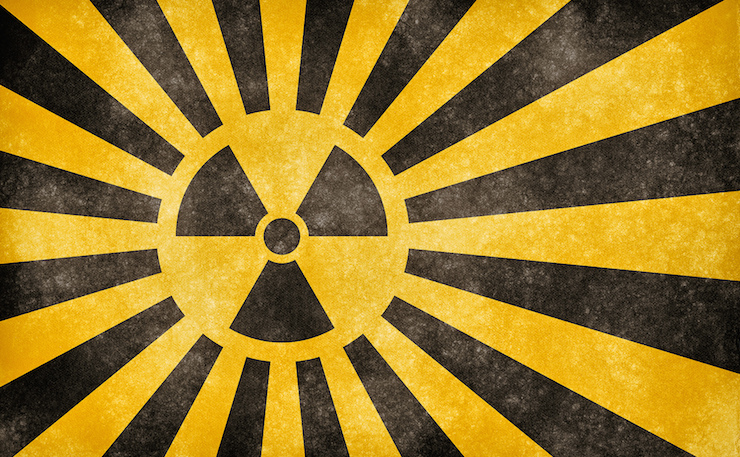A South Australian Royal Commission has scuttled suggestions that nuclear power is currently an economically viable way to bring down emissions in the state, but promoted the multi-billion dollar economic virtues of storing other nations’ nuclear waste materials.
The ‘tentative findings’ of the Royal Commission sit uneasily with the often trenchant claims from both sides of the nuclear debate, and open a series of questions around how the struggling state might take advantage of expanding its nuclear involvement.
At a press conference yesterday Commissioner Kevin Scarce, who has spent 12 months taking evidence from 128 witnesses, backed nuclear supporters’ complaint that “the debate has been framed upon fear”.
“One of the reasons that I signed up to this particular job was I thought it was important to have a discussion on fact, and that is what I’ve attempted to do,” he said.
The interim report did not make any recommendations, but appears to have sidelined the possibility of nuclear power generation as a means of meeting South Australia’s ambitious emissions reduction targets, at least in the near-term.
“Taking account of future demand and anticipated costs of nuclear power under the existing electricity market structure, it would not be commercially viable to generate electricity from a nuclear power plant in South Australia in the foreseeable future,” the report said.
“That being said, we believe, based upon the evidence given to the Commission, that nuclear is a low-carbon energy source. It’s comparable with other renewable technologies,” Scarce said.
“Nuclear generation should be part of the national consideration because of the potential challenges of Australia meeting its carbon abatement task both now and into the future,” he said.
The report found nuclear power generation would not be capable of substantially contributing to emissions reductions before 2030 – due to long lead times in construction – but that “it would be wise now to plan for a contingency” to take affect in the decades after.

The Royal Commission was also tasked with investigating possibilities around the storage of nuclear waste, a prospect which emerged as a highly significant economic opportunity for South Australia.
According to the interim report, there was a global stockpile of 390,000 tonnes heavy metal (tHM) of used fuel and reprocessed waste in 2015, and about 9.9 million cubic metres of intermediate-level waste storage.
Those numbers are set to grow, and the report found that “given the quantities held by countries that are yet to find a solution for the disposal of used fuel, it is reasonable to conclude that there would be an accessible market [for its storage in South Australia].”
Any such facility would need to be government-owned, because of the long-term nature of the risks posed by nuclear materials. New, secured ports and railways would also be needed to guard against malicious interference.
Notwithstanding that, the report suggests that a 100-year storage project would bring in $257 billion in revenue, at a cost of $145 billion.
According to Scarce, the modelling used to arrive at those figures was highly conservative: “I wanted to under-promise and over-deliver,” he said.

Based on those assumptions, the storage facility would bring in $5 billion a year for the first three decades, and about $2 billion annually for the following 53 years.
Around 1,500 full-time jobs would be created during an approximately 25-year construction period, peaking at about 4,500 jobs, with 600 anticipated to continue through the operational phase.
Those numbers are likely to hold particular appeal in South Australia, which has the highest unemployment rate in the nation.
The report took a dim view on the prospect of expanded uranium mining activities in the short-term, and the profitability of further processing and manufacture of uranium, and so those areas are unlikely to yield significant jobs.
It’s important to note, too, that any expansion of South Australia’s involvement in the nuclear fuel cycle would require strong political support, something which has eluded the nuclear industry in Australia.
To cash in on potential waste storage, for example, state laws would need to be changed, and a Federal approval sought. In affect, a new and entirely bi-partisan regulatory framework would need to be established.
The Federal Government is currently struggling to develop a storage facility for a small amount of intermediate waste created by Australia, which was recently returned from temporary storage in France.
Efforts to establish a central repository – which have failed more than once before – are being met with strong opposition from many of the communities that stand to be affected.

Labor Premier Jay Weatherill would likely find himself at odds with the Federal party if he made serious moves towards expanding South Australia’s nuclear involvement, along with other state satellites. Queensland Labor, for example, recently re-instated a ban on uranium mining.
More fundamentally, as Commissioner Scarce pointed out, “any future moves to increase the state’s involvement in the nuclear fuel cycle should not proceed without social consent”.
Overall, the report found that while the risks associated with various aspects of the nuclear fuel cycle are real, they can be safely managed.
In support of his assertion that nuclear power may have a future role to play in combatting carbon emissions Scarce cited a report from NASA, “which said they’d estimate that over time nuclear had saved about 64 gigawatts of carbon emissions”.
“They related that to preventing 1.8 million deaths,” Scarce said.
The Royal Commission’s final report is due in May.
Donate To New Matilda
New Matilda is a small, independent media outlet. We survive through reader contributions, and never losing a lawsuit. If you got something from this article, giving something back helps us to continue speaking truth to power. Every little bit counts.





